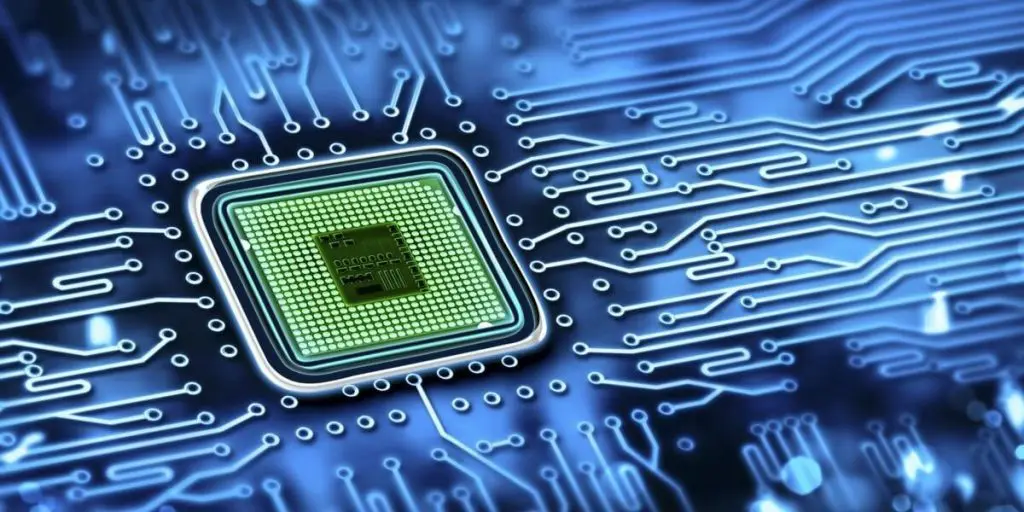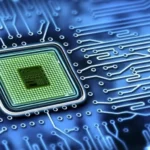What is an Embedded System? A Simple Explanation
An embedded system is a small computer inside a larger machine. It helps control how the machine works. Unlike regular computers, embedded systems are designed to do specific tasks. They can be found in many everyday devices like microwaves, washing machines, and cars.
These systems are usually made up of a processor, memory, and software. The processor is like the brain, the memory stores information, and the software tells the system what to do. All these parts work together to make the machine function correctly.
As reported by Global Markets Insight, the embedded systems market was valued at $110.3 billion in 2023 and is projected to exceed $190 billion by 2032. Major technology companies such as Apple, IBM, Intel, and Texas Instruments are key players in manufacturing chips for embedded systems. This growth is largely driven by ongoing investments in artificial intelligence (AI), mobile computing, and the demand for high-performance processing chips.
How does an embedded system work?
An embedded system works by taking in information from its surroundings. This information comes from sensors, buttons, or other inputs. For example, when you press a button on a microwave, the system receives that input and knows what you want it to do.
Next, the system processes the information. It has a processor, like a small brain, that follows a set of instructions called software. These instructions tell the system how to respond to the input. In the microwave, the processor decides how long to cook the food and at what power level.
Finally, the system gives an output. It might turn on a motor, light up a display, or make a sound. In the microwave example, the output is the microwave starting to cook. The system repeats this process, ensuring the device works as expected.
Characteristics of Embedded Systems
The defining feature of embedded systems is their focus on performing specific tasks. Typically, these systems exhibit several key characteristics:
- They are composed of hardware, software, and firmware components.
- They are embedded within larger systems and designed to execute dedicated functions rather than multiple tasks.
- They can be built on microprocessors or microcontrollers—integrated circuits providing computational capabilities.
- ASICs (Application-Specific Integrated Circuits) and FPGAs (Field-Programmable Gate Arrays) are commonly used in their design.
- These systems are frequently utilized for sensing and real-time computing in IoT (Internet of Things) devices, which operate autonomously without user intervention.
- Their complexity and functionality can vary, influencing the software, firmware, and hardware required.
- They often must operate within strict time constraints to ensure the overall system functions correctly.
Types of Embedded Systems
Different types of embedded systems vary in their functional requirements. These include the following:
Mobile Embedded Systems are compact devices crafted for mobility. Examples of such systems include digital cameras, smartphones, and laptops.
Networked Embedded Systems are linked to networks to transmit data to other systems. Examples of such systems are home security setups and point-of-sale terminals.
Standalone Embedded Systems operate independently without needing a host system. Although they are designed to carry out specific functions just like other embedded systems, they do not rely on or integrate with a host system. Examples of standalone embedded systems include calculators and MP3 players.
Real-time Embedded Systems deliver the necessary output within a specified timeframe. They are commonly utilized in sectors such as medical, industrial, and military fields due to their role in handling time-sensitive tasks. An example of such a system is a traffic control system.
Debugging Embedded Systems
Embedded systems require different approaches to debugging compared to traditional operating systems and development environments used in larger-scale computing. In desktop environments, developers can typically run the application code alongside separate debugging tools that can monitor the system in real time. However, this is often not the case with embedded systems.
Some programming languages are optimized for microcontrollers, allowing for basic interactive debugging directly on the chip. Additionally, many processors include built-in CPU debuggers that can manage program execution through industry standards like JTAG or similar debugging ports.
In many cases, developers must connect a separate debugging tool to the target system via a serial or another type of port. This setup enables the programmer to view the source code on a general-purpose computer, similar to how software debugging is performed on desktop systems.
Another common method is to run software on a PC that emulates the physical chip, allowing the software to be debugged as though it were executing on the actual hardware.
For simpler debugging, a general-purpose I/O pin can be used to confirm that a specific line of code is being executed within the application. A source-level debugger is another fundamental tool, providing the ability to step through code, pause execution, and inspect program memory or variables.
Logic analyzers are also widely used in embedded systems debugging. These devices can simultaneously capture multiple signal waveforms and decode data from various standard interfaces.
Overall, embedded systems demand more rigorous testing and debugging due to their widespread use in safety-critical and reliability-focused applications.
History of Embedded Systems
Embedded systems have a long history. They started in the 1960s. The first embedded system was the Apollo Guidance Computer. It helped the Apollo spacecraft reach the moon in 1969.
In the 1970s, more embedded systems were made. The Intel 4004, created in 1971, was the first microprocessor. It was small and powerful. This made embedded systems popular in many devices.
In the 1980s, embedded systems became common in everyday items. Cars, home appliances, and industrial machines used them.
Today, embedded systems are everywhere. They are in smartphones, TVs, medical devices, and even toys. These systems continue to get smarter and smaller.
Embedded System Trends
Here are some key trends in embedded systems:
- AI Integration: More embedded systems now use artificial intelligence. This helps them make smart decisions faster.
- IoT Growth: Embedded systems are key in the Internet of Things (IoT). They connect devices and share data.
- Low Power: Energy-efficient designs are becoming important. This helps devices run longer on less power.
- Edge Computing: Processing data closer to where it’s created. This makes systems faster and more efficient.
- Security: As systems connect to the internet, cybersecurity is vital. Protecting data is a big focus.
- Open-Source Software: More companies use open-source software. It reduces costs and speeds up development.
These trends shape the future of embedded systems, making them smarter and more connected.



